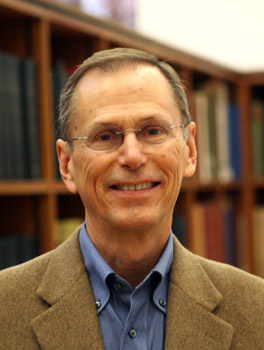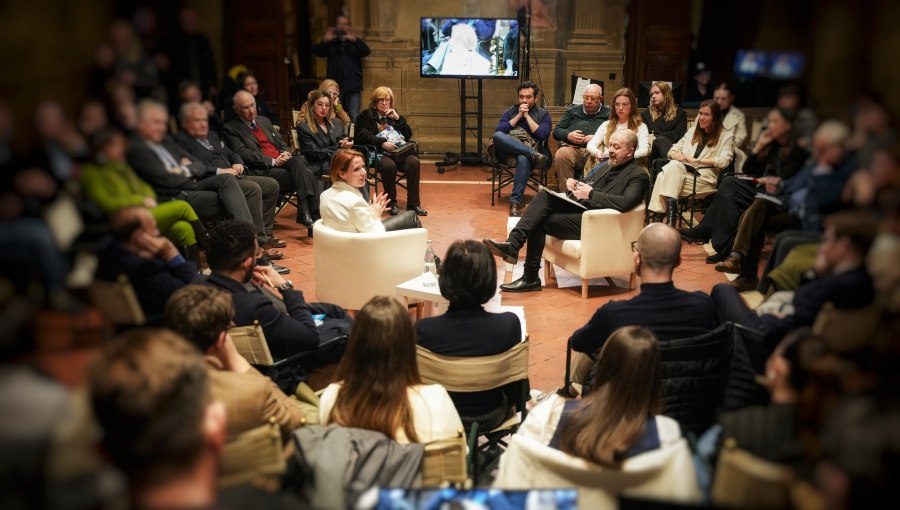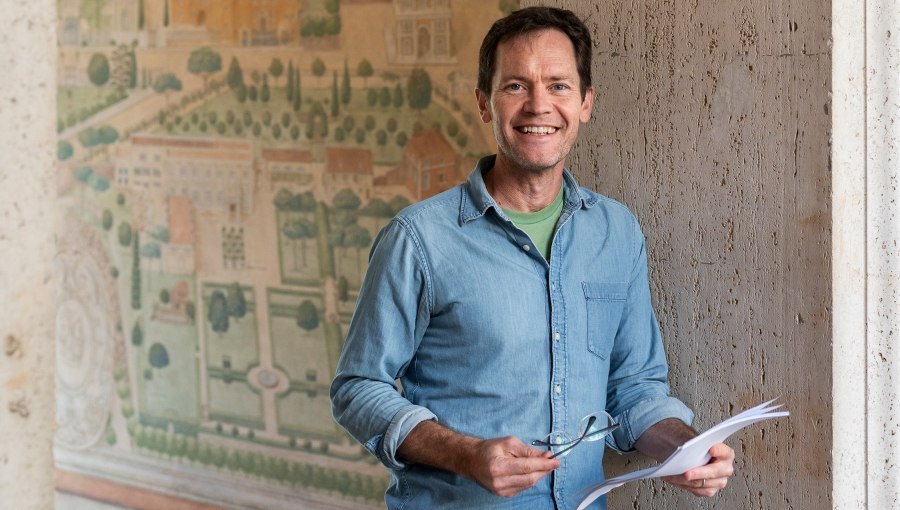Princeton Professor Patrick Geary Shares HistoGenes Research

Patrick Geary
John Cabot University welcomed Patrick Geary, Professor of History Emeritus at the Institute for Advanced Study in Princeton, for a lecture titled “The new interdisciplinary history: Studying Barbarian migrations through genomic data”, on November 8, 2021. The event was organized by the JCU Institute of Future and Innovation Study with the support of the Department of History and Humanities and was moderated by JCU History Professor Fabrizio Conti and the director of the Institute, Professor Francesco Lapenta. The lecture gave an overview of the HistoGenes research project, funded by an ERC Synergy Grant, of which Professor Geary is one of four principal investigators. The project’s aim is to use genomic, historical, and archaeological data to understand population structures during the so-called Migration period at the end of the Roman Empire in the West.
Professor Geary began by explaining how for more than two centuries the study of the transformation of Western Eurasia at the end of Antiquity, the disappearance of the institutional and economic structures that bound the Western Roman Empire, and the establishment within the Roman limes of barbarian kingdoms have been vast areas of research, as well as of speculation and ideological construction. A series of questions arose, such as, was it the barbarian peoples, along with Christianity, who destroyed the Roman world, as Edward Gibbon and, more recently, Brian Ward-Perkins have argued? Or, were the barbarian incursions into the Roman Empire the result rather than the cause of the collapse of the imperial system, as Guy Halsall argues? Who were these people? Were they large groupings of people or small military units? Did they share a common ancestry, culture, language and political system or were they heterogeneous confederations formed ad hoc for specific purposes? These are broad questions and finding common ground on them turned out to be particularly difficult. As Professor Geary pointed out, the difficulty is mostly due to the inadequacy of written evidence, along with the ambiguity of archaeological evidence and to modern ideology.
The case of the Longobards, diffusing into Northern Italy from Pannonia (Hungary) under their king Alboin in 569 CE, is particularly relevant. It is thanks to the analysis of North Italian and Central European tombs at the center of Professor Geary’s research project that more specific, fundamental questions are being tackled, such as whether there were real migrations in the “Migration Period”, or if one should rather talk of transformation, ethnogenesis, military incursions; what genetically defined populations inhabited the Pannonian frontier and northern Italy between the fifth and seventh centuries and how did they change over time; whether forms of material culture representation can be correlated with genetic groups, and whether there were close genetic relationships between the populations the research group identified in Pannonia and those in Italy that practiced similar burial customs suggesting demographically significant migration.
Professor Geary stressed that the historical and conceptual reality of migration is particularly important and sensitive, especially for today’s political implications. If some migrations did take place, one must understand their chronology, social complexity within societies, gender-based experiences of migration, the process of absorption, merger, or replacement of populations, and finally the transformation of migratory and host societies. Technological advances have allowed experts to analyze thousands of ancient genomes, and provided a first comprehensive overview of the genetic history of Europe, but only few studies have concentrated on specific historical periods. Ancient DNA analysis can now be applied to historical periods, as showed by the project Professor Geary is leading, which aims to apply this method to some 6000 burials between Hungary and Northern Italy. He pointed out how many people look to genetics to find out who they ‘really are’, which is something that can be exploited commercially and politically. While identity is complex, Professor Geary draws the conclusion that it has a lot more to do with culture rather than genetics. This is the reason why the geneticist cannot work alone to answer complex questions that are interdisciplinary in nature, and the work of the historian is, from this point of view, fundamental.
On November 8, Professor Geary was a guest lecturer in Professor Conti’s Introduction to Western Civilization I course, discussing central features of medieval European society with students. Among them, the category of feudalism is particularly relevant, since it establishes relationships of a social, juridical, and political nature among free individuals, in fact creating bonds of social and economic subordination that will remain in most cases until the French Revolution of 1789. Moreover, Prof. Geary underlined how feudal institutions are particularly suitable to characterizing continuity at the level of Western civilization, as they derive from similar institutions of the previous age, both Celtic and Roman.
Patrick Geary is Professor of Medieval History Emeritus at the Institute for Advanced Study, Princeton, and Distinguished Professor of History Emeritus at UCLA. He is the former President of the Medieval Academy of America, former director of the Notre Dame Medieval Institute and the UCLA Center for Medieval and Renaissance Studies, and he is a member of the American Academy of Arts and Sciences. His publications have become standard literature in the field. Among his several books, are Furta Sacra: Thefts of Relics in the Central Middle Ages; The Myth of Nations: The Medieval Origins of Europe; Women at the Beginning: Origin Myths from the Amazons to the Virgin Mary.





